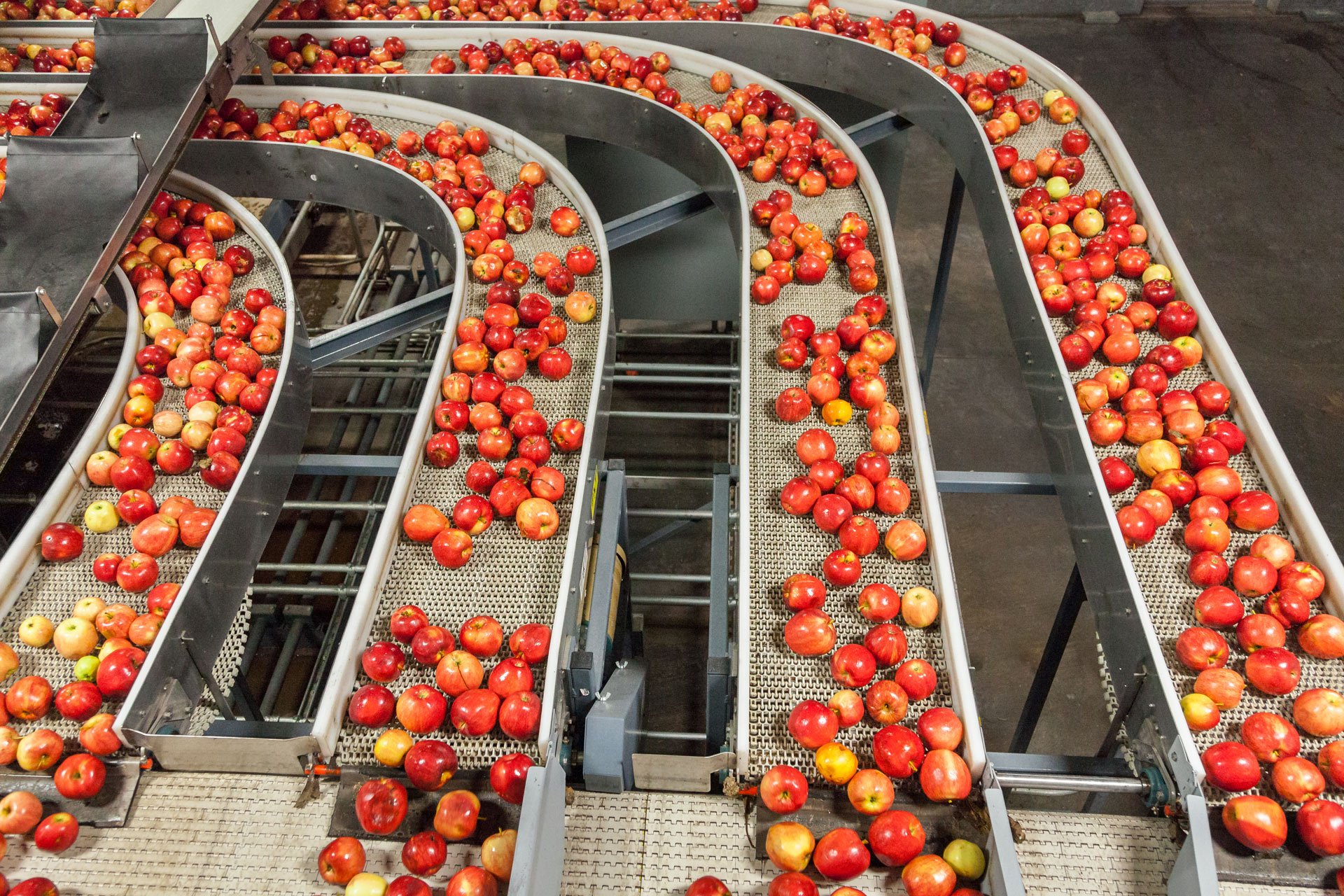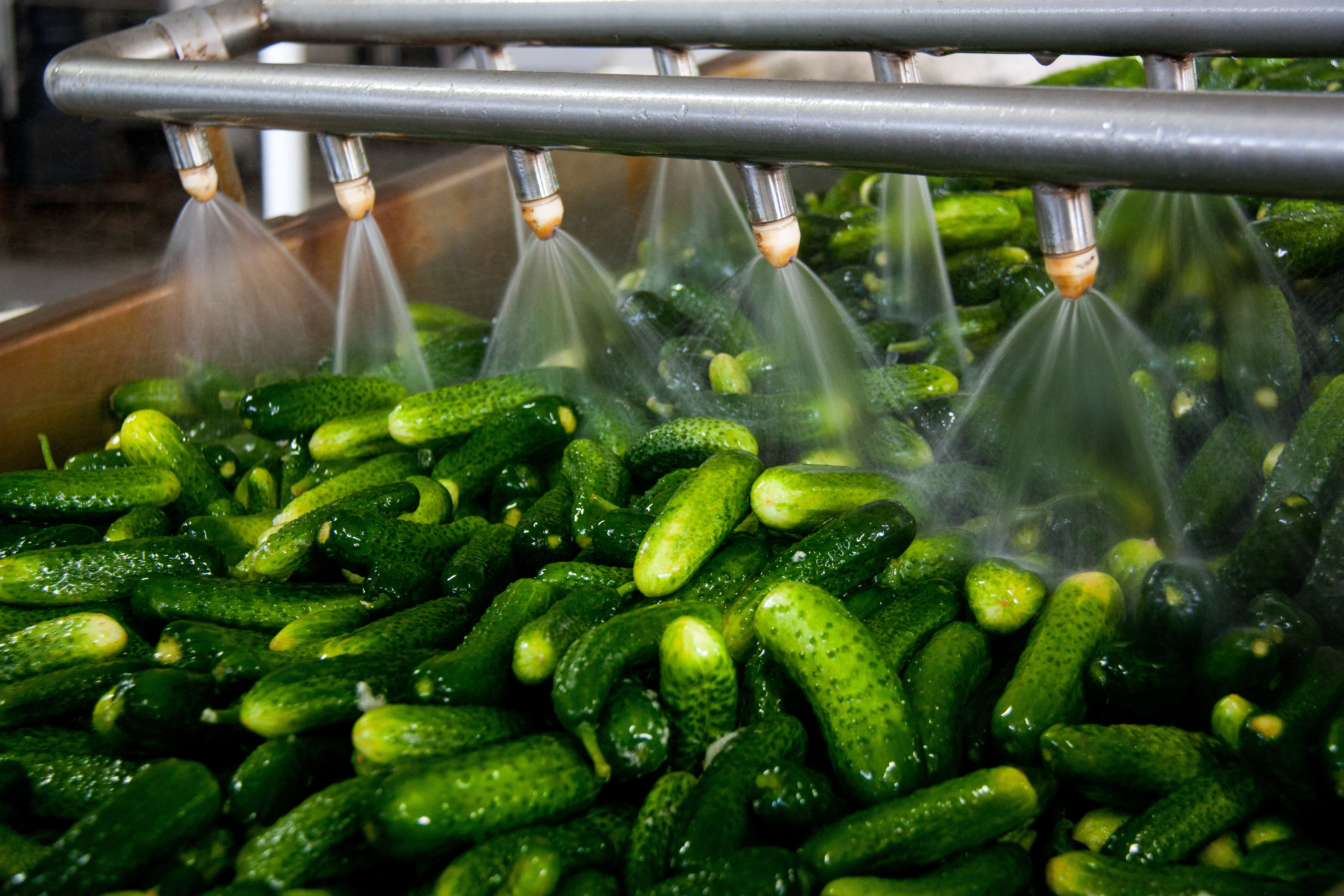In the food industry, keeping up with the latest technology has become somewhat vital if businesses are to stay competitive. The right technology investments can also stabilise your business’ supply chain in the event of unpredictability.
Here are some of the technology innovations the food industry should be investing in for 2021.
- An enhanced traceability process to ensure food safety
- Voice technology to improve productivity
- Data mining technology to better understand market trends
- Ability to track recipes to support food sourcing
- Automation to improve overall efficiency
- Better ways to measure loss and waste so you can prevent them
1. An enhanced traceability process to ensure food safety

Food safety isn’t a trend, it’s a necessity. Nor is it ‘new’. But it is more important than ever before, considering the rise in consumers who suffer from food allergies. Additionally, there are specific food trends that are growing in popularity - for example, plant-based foods, which mean food businesses need to be sure that their products are 100% free from animal substances.
This is where traceability and ensuring a transparent supply chain matter. You can achieve this by digitising your food supply chain. Here are some examples of technology that can help:
- Food industry-specific ERP software that can capture all the relevant product information from the moment it enters your supply chain, track vendor/supplier information and ensure compliance within the market you operate in
- Blockchain to reduce the risk of human errors occurring when food products/ingredients enter the supply chain
2. Voice technology to improve productivity
Alexa, Siri and Google Assistant aren’t just showing consumers how they can shave time off their day-to-day tasks, no matter how menial they are (I’m almost ashamed to admit how many times I’ve asked Siri to tell me what time it is because I’m too lazy to look up at the clock on my wall). Voice technology is also showing businesses how they can boost productivity.
Take warehouse workers or employees on a food manufacturing business’ shop floor. Voice technology can mean they can input data into software without needing to touch a keyboard or screen. Not only is this faster, but it can potentially be more hygienic too.
3. Data mining technology to better understand market trends

Today’s consumers are more informed than they’ve ever been. For example, they’re more aware of the ethical implications of the food and drink they consume. Health is still a priority, but they also want to make sure the products have been sustainably sourced and the manufacturer supports ethical working practices.
You need to stay ahead of these trends if you’re going to keep meeting and exceeding your consumers’ expectations. Data mining technology, such as Microsoft’s Power BI and Artificial Intelligence, will help.
For instance, a Power BI and ERP system integration can bring real-time data on warehouse activity, chiller and freezer conditions, driver performance and customer preferences (based on historic data) into one place. Not only will this allow you to see where your business can maximise operational efficiency, but you can also view visual dashboards.
These dashboards are customisable so you can digest the information you need at that moment in time. This can tie your customer preferences into other aspects of your business to drive overall efficiency.
4. Ability to track recipes to support food sourcing
Food supply chains are vulnerable to change. Most supply chains tend to be global which complicates things even further. Take Brexit, for example. Changes in documentation will inevitably lead to some degree of disruption in supply chains that extend across the UK and the EU.
One solution is to look at sourcing some ingredients and components closer to home. And there’s an added benefit to locally sourcing products. Not only can this tactic avoid disruption, but it can also address environmental concerns. Source closer to home and you can reduce carbon footprint.
You can achieve this by using industry-specific solutions, such as food ERP software, that come with recipe tracking features so you can track particular recipes and their associated costs.
5. Automation to improve overall efficiency

The food industry is often under pressure to improve quality and boost profits while margins remain narrow. When you throw in complications, such as skill and workforce shortages caused by Brexit and global pandemics, it becomes even more complex. So, automation is usually a no-brainer.
Automation can:
- Ensure quality control - when processes are automated, errors and defects can be identified, isolated and resolved more quickly
- Improve food safety - you can gain a more granular view of your food manufacturing processes and ensure one process change won’t cause adverse consequences in another
- Boost efficiency and reduce waste - when deployed correctly, automation can boost efficiency, reduce waste and improve cost efficiency much more than if your processes relied on just human workers
- Gives you time back - automate repeatable processes so your workers gain more time back to spend on tasks that actually require human input. This can also boost employee morale
- Enhance traceability - as soon as a product/ingredient enters your supply chain, it can be automatically scanned and its data entered into your ERP system. Not only does this reduce the risk of human error, but it also ensures end-to-end traceability which can improve supply chain management
6. Better ways to measure loss and waste so you can prevent them
As some products have short shelf lives, food businesses need to minimise the chances of over-supply happening. But they also need to ensure they don’t under-supply because that can lead to customer dissatisfaction.
End-to-end solutions, such as food ERP software, can manage supply and demand through the entire supply chain. Thanks to software integrations, ERP software can use historic and current data to make accurate predictions on how much supply to bring in to meet expected demand levels.
This can also put your business on a more sustainable path. The less product is ‘left over’, the less will end up in landfill (for example) and the fewer deliveries you have to make which can reduce carbon emissions.
What other food industry technology innovations should you be aware of?
The trends mentioned in this blog post are just a few of the innovations you should know about. What about consumer trends? What trends are actually being implemented by the industry and which can afford to be placed on the backburner?
Our latest report reviews the food and drink industry, from how we left it in 2020 and what 2021 and beyond will look like. Learn more about the top industry trends and tips on how you can successfully innovate by clicking the button below.

